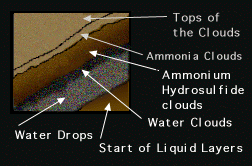This is a drawing of the transition from the atmosphere to the interior.
Click on image for full size
NASA
The Layers Inside of Jupiter
There is no surface to the giant planets, only a gradual change from the atmosphere, as shown in this drawing.
The gases which Jupiter is mostly made of change to liquid inside Jupiter, but the change is very slow. This means that the giant planets do not have real layers on the inside, as the earth-like planets do.
The liquid sections of Jupiter are the biggest parts of the planet and go down very deep (the liquid is not made of water!). The first liquid layer inside Jupiter, right under the atmosphere, is called the liquid hydrogen layer. Under the liquid hydrogen layer is a layer called the liquid metallic hydrogen layer.
At the deepest part of Jupiter is the core, which is probably the size of planet Earth.
You might also be interested in:

The Giant planets do not have the same kind of layers inside that the earth-like planets do. The history of the giant planets was so different that they formed with much more gas on the inside. Jupiter
...more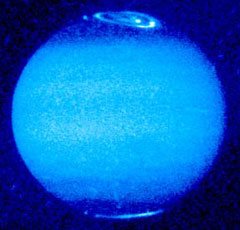
Jupiter has interesting poles. The poles of some of its large moons are interesting too. Io is one of the big moons. Io has volcanoes near its poles! The other big moons are covered with ice, like Earth's
...more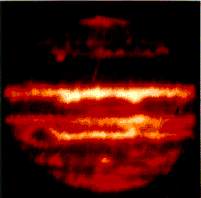
Have you ever thought that a planet could make energy within itself? If you think about it, the ground is not very cold at all (except in the winter). This means that the Earth makes enough energy for
...more
Motions, or currents in the interior of a gas-giant planet such as Jupiter may be very different from the motions typical of the earth's interior. A second idea for the motions in the interior of a gas-giant
...more
Motions in the interior of a planet help carry heat from the inside to the outside of the planet. The drawing shows a kind of movement that is usual in the atmosphere as well as the inside of a planet.
...more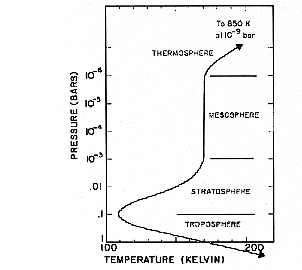
This is the temperature profile of Jupiter's entire atmosphere. The horizontal lines indicate the boundaries between the troposphere, the stratosphere, the mesosphere, and the thermosphere.
...more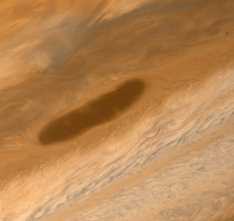
This is a picture of a brown barge. The accompanying clouds, next to the barge, look very similar to earth clouds.
...more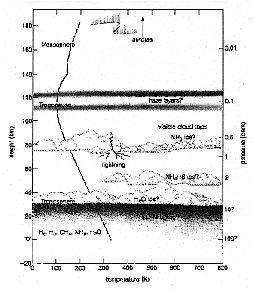
There are three different layer of clouds in Jupiter's atmosphere, as shown in this picture. The clouds are made of complex molecules such as water. Another molecule which the Jupiter clouds are made of
...more


